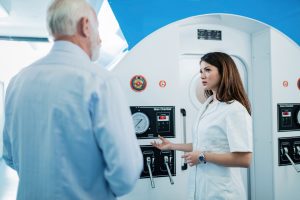The landscape of healthcare is rapidly evolving, and revolutionary imaging techniques are at the forefront of this transformation. These innovations are enhancing diagnostic precision and paving the way for personalized treatments, improved patient outcomes, and a more efficient healthcare system.
A New Era in Medical Imaging
Modern imaging techniques have moved far beyond traditional X-rays and basic CT scans. Today’s advancements offer a window into the human body like never before, allowing clinicians to view intricate details and subtle changes that are critical for early diagnosis. Healthcare providers can detect conditions at their nascent stages with high-resolution images and real-time data, ensuring timely intervention and better prognoses.
Cutting-Edge Techniques Driving Change
Several revolutionary imaging methods are making waves in the medical community:
- 3D Imaging and Reconstruction: This technology provides a multi-dimensional view of anatomical structures, enabling surgeons to plan complex procedures with greater accuracy. By visualizing organs, tissues, and vascular structures in three dimensions, clinicians can better understand the spatial relationships that are essential during surgery.
- Functional Imaging: Techniques such as functional MRI (fMRI) and positron emission tomography (PET) go beyond anatomical imaging by mapping physiological processes. They reveal how organs function in real time, offering insights into brain activity, blood flow, and metabolic processes that traditional imaging might miss.
- Molecular Imaging: This innovative approach focuses on visualizing biological processes at the molecular level. By tracking specific molecules within the body, molecular imaging can detect diseases like cancer long before structural changes become apparent, opening doors to earlier and more effective treatment options.
- Hybrid Imaging Systems: Combining different imaging modalities, such as PET/CT or PET/MRI, allows physicians to leverage the strengths of each technique. These hybrid systems provide comprehensive data by merging anatomical and functional information, resulting in more accurate diagnoses and tailored treatment plans.
Impact on Diagnosis and Treatment
The integration of these advanced imaging techniques into routine clinical practice is revolutionizing patient care in several ways:
- Early Detection and Intervention: Enhanced imaging capabilities allow for the early identification of diseases, from cancer to cardiovascular conditions. Early detection improves treatment outcomes and reduces healthcare costs by addressing issues before they escalate.
- Precision Medicine: Detailed and dynamic imaging data empower clinicians to customize treatment strategies based on the unique characteristics of each patient. This personalized approach increases the likelihood of treatment success and minimizes adverse effects.
- Non-Invasive Procedures: Revolutionary imaging techniques often reduce the need for invasive diagnostic procedures. With clearer images and better data, many conditions can be monitored and treated without the need for surgical intervention, leading to quicker recovery times and less discomfort for patients.
Revolutionizing Patient Experience and Outcomes
Patients today benefit from these advancements in numerous ways. The clarity and precision of modern imaging reduce diagnostic uncertainty, leading to faster decision-making and treatment initiation. Furthermore, these technologies contribute to a more patient-friendly experience by minimizing the discomfort and risks associated with traditional invasive procedures.
Telemedicine, empowered by digital imaging, is another game-changer. Remote consultations and digital image sharing mean expert opinions can be obtained quickly, regardless of where a patient is located. This connectivity ensures that even those in remote or underserved areas have access to top-tier diagnostic care.
Looking Ahead: The Future of Healthcare Imaging
As technology continues to advance, the future of healthcare imaging looks increasingly promising. Researchers are exploring the potential of quantum imaging and artificial intelligence to further enhance image resolution and diagnostic capabilities. AI, in particular, is poised to play a major role in automating image analysis, identifying patterns that may elude human eyes, and predicting patient outcomes with remarkable accuracy.
Moreover, the development of portable and wearable imaging devices could bring high-quality diagnostics directly to the patient’s bedside or even into their homes, revolutionizing how we monitor and manage chronic conditions.
Conclusion
Revolutionary imaging techniques are not just a technological upgrade but a paradigm shift in how we diagnose, treat, and understand diseases. By providing detailed, dynamic, and accurate insights into the human body, these innovations are shaping a future where healthcare is more personalized, efficient, and patient-centered. As we embrace these advancements, the promise of earlier interventions, better outcomes, and enhanced quality of life become ever more attainable for patients around the globe.
The journey of medical imaging is far from over, and each new breakthrough brings us closer to a future where healthcare is as precise and compassionate as it is technologically advanced.




